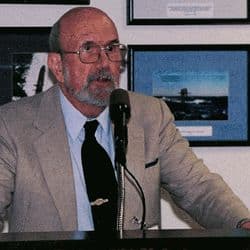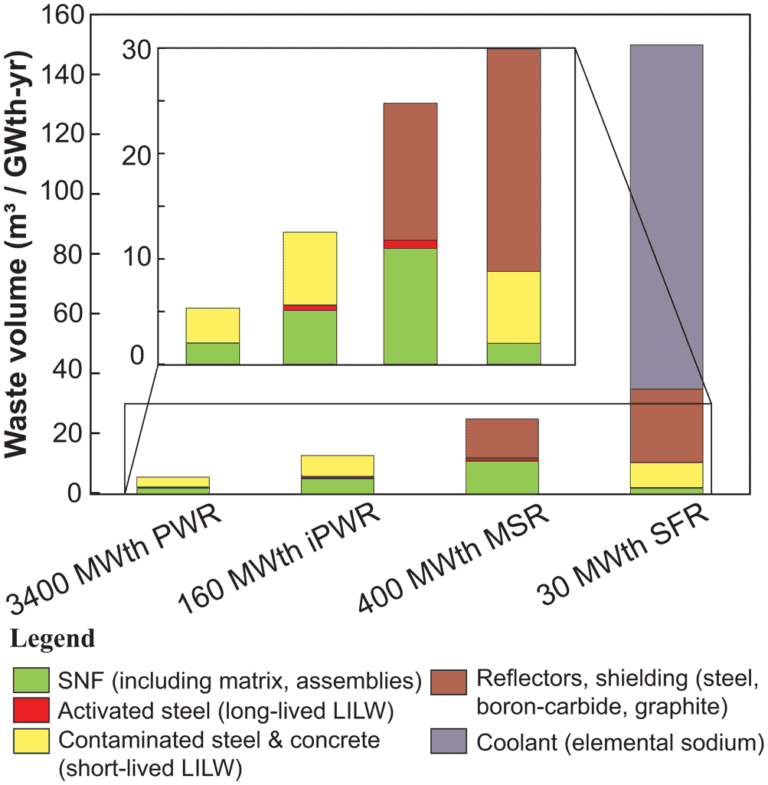Guest Column: Do Not Eat the Glass
Theodore Rockwell is the author of The Rickover Effect: How One Man Made a Difference. He was one of Rickover’s key team members in the early days of the Navy nuclear power program. This letter is published with his permission.
The following letter was written by Mr. Rockwell to the Washington Post. It was not published.
Your Sunday (Dec 31) page 1 story on nuclear waste was well researched and well written. But the headlines and some of the quotes imply this is a grim and urgent problem. Actually it’s a problem only in the sense that flag-burning is a problem; no one has ever been hurt or is likely to be. It is true, as you report, that the people in the Energy Department can’t “even describe this as a coherent program,” but this is not surprising when the administration has staffed the key positions with anti-nuclear activists.
The facts are these: A major advantage of nuclear power is that it produces a million times less waste volume compared to its only long time competitor, coal.And it generates no global-warming gases. Coal plants dispose of their wastes by creating acid rain, global warming, and killing 30,000 Americans each year with respiratory degradation.
There is no technical problem in putting toxic material into insoluble glass or bituminous “logs”, where they present no public hazard. The political problem arose when President Carter decreed that we should renege on our 40-year contractual commitment to reprocess nuclear fuel for other nations. This left our fuel elements, with only 3% of the fuel spent, to be buried without first removing the fuel and the fission products. It forced England, France, Belgium,Japan and others to set up their own fuel reprocessing plants.
The volume of “waste” is many times larger when the whole fuel element must be buried, instead of just the fission products. Even so, the volume is trivial compared with other wastes we produce. Reprocessing would remove not only the fission products but also the uranium and plutonium and other long-lived elements which constitute a valuable national resource, equivalent in energy to all the world’s oil reserves.
The article expressed great concern over the long half-lives of nuclear waste.But the difference between nuclear and other toxins is that non-radioactive elements such as lead, arsenic, selenium, cadmium, etc. found in coal and other wastes have infinite half-lives-they never diminish in toxicity. And some of them are even more toxic than nuclear waste. But instead of trying to guarantee isolation beyond a shadow of a doubt for a million years, we try to put them where people will not inadvertently eat them. This seems to work just fine.
America has many real problems. Nuclear waste is not one of them. The real waste problem is the money being spent on silly ideas like million-year isolation vaults. A simple, fenced-off area to store the glass logs would do nicely, with perhaps an OSHA sign reading: do not eat the glass.


